Prior to presentations by the panelists, the moderator spoke on “How to Create New Value from Existing Nuclear Fleet?” and set out some future issues. Saying that “stakeholders were isolated and sometimes tried to get involved in decision making in unhealthy ways,” he asked how future nuclear technology could improve its public acceptance and ensure a continued active position for itself.
From the viewpoint of how power utilities, regulators and stakeholders can enhance nuclear safety through dialogue, Murakami cited comments made by Chairman Richard MESERVE of the IAEA’s International Safety Advisory Group (INSAG) in its 2017 report. Meserve had noted such matters as supervision by an independent regulator over a utility’s nuclear safety, cooperation among utilities on safety improvements, and the necessity for regulators to improve safety through international peer reviews. When applied to Japan, Japan’s characteristic organizational structure and mindset of the people who take it for granted were pointed out.
In the IAEA report on the accident at the Fukushima Daiichi, examining human, organizational and technical factors, Japan was advised to adopt an integrated approach taking account of the complex interactions between people, organizations and technology.
In 2022, the Second Independent Investigation Commission published a ten-year investigative report on the Fukushima Daiichi Nuclear Accident. In the report, SUZUKI Kazuto, a professor at the University of Tokyo Graduate School of Public Policy, struck a note of warning about a “homework” regulatory approach. A regulatory authority assigns “homework” to utility operators, and they do it. Originally, the idea was that the regulator provided goals and effects, and the operators were to decide methods to accomplish those goals. The regulator was to supervise such methods, which it was hoped would result in better regulation.
With that as the backdrop, the session turned to several key topics, discussing each from the viewpoints of policy, regulation and technology:
- Developing an environment enabling a choice between long-term operation (LTO) beyond sixty years and ‘new builds’
- Improving nuclear asset efficiency without increasing the negative legacy (CO2 and high-level radioactive waste, or HLW)
- Seeding for the future by separating the axes of time and scale
Given the number of plants where operations have been suspended longer than anticipated, Murakami noted the necessity of defining politically the role of the suspended plants. He then said that, while current nuclear businesses continue, an environment should be created enabling discussions of which option is more favorable to investors: next-generation new reactors or existing reactors with equivalent safety operated beyond sixty years.
He also noted the simultaneous need for an advanced regulatory basis, i.e., a regulatory system for approving extensions of operating lifetimes and safety requirements for use of accident tolerant fuel (ATF). There, technology will also be necessary to compare and evaluate safety performance.
Regarding negative legacy, the nuclear industry has not taken advantage of carbon neutrality, which is now the focus. It is currently recognized that nuclear energy does not emit CO2, but also that it generates radioactive waste. Finally, it is necessary to eliminate the misunderstanding that the nuclear industry seeks somehow to impede the introduction of renewable energy.
R&D for high burn-up fuels for nuclear plants must be implemented as part of technology to reduce HLW volumes in the future. For that, measures are needed to increase human resources in R&D in order to maintain a foundation in the area of reactors and fuel. The reality, however, is that budgets and public funds for research are prioritized for solutions to short-term issues. Even the SDG targets are only to 2030. The nuclear industry and research community should recognize the truth of that, Murakami said, and re-address R&D from the viewpoint of solving energy problems in a short period, using existing various nuclear core technologies.
Saying that universities will also consider development of technology for improving sanitation and creating an educational environment—seeding Japan now in anticipation of the future—Murakami presented several problems and launched the discussion.
+ +
The first panelist was Matthew MAIRINGER, a member of the board of directors of the Canadian Nuclear Association and the Canadian Operating Officer for North American Young Generation in Nuclear (NAYGN). He presented the current state of nuclear energy and advocacy activities in Canada.
Outline of Mairinger’s presentation:
In Canada, nineteen CANDU (Canada Deuterium Uranium) units are in operation, accounting for up to 15% of Canadian electricity. Natural uranium and heavy water are used, and continuous refueling through a horizontal Calandria is possible. There are two shutdown systems and a vacuum containment building to control overpressure. In provinces other than Ontario and Saskatchewan, nuclear power is not generally used, but that situation is expected to change by use of small modular reactors (SMRs) in the future.
Canadian nuclear activities are mostly in Ontario and Saskatchewan. Uranium mining and milling are done in Saskatchewan, and some R&D and processes following milling are done in Ontario. Supply chains continue from Ontario, and Ontario provides most power generation and waste management.
Canada is the second largest producer of uranium in the world, with 13% of global uranium mining and milling taking place in northern Saskatchewan. Spent fuel is not reprocessed, in a once-through practice known as “open cycle.” In 2002, the Nuclear Fuel Waste Act came into effect and the Nuclear Waste Management Organization (NWMO) became responsible for designing and implementing Canada’s plan for the safe, long-term management of used nuclear fuel. After a three-year investigation and public comments, NWMO’s Adoptive Phased Management Initiative—deep geological disposal—was chosen. Potential sites have been narrowed to two: South Bruce and Ignace. The final one will be decided in 2023. A deep geological repository (DGR) for spent fuel is expected to be ready sometime between 2043 and 2045.
At the federal level, in 2020, Natural Resources Canada (NRCa) reviewed a 1996 policy on Radioactive Waste Management. There were two outcomes. NRCa updated the existing policy framework for radioactive waste so that it would obtain understanding nationwide and comport with international best practices. And, it requested that NWMO take the initiative in dialogues for development of a strategy for comprehensive radioactive waste management, including low- and medium-level radioactive waste. NWMO’s draft strategy will be announced in the second quarter of 2022.
In order to achieve net zero by 2050, the strategy positively refers to nuclear energy’s playing a key role, emphasizing, for example, the ability to supply radioactive isotopes for medical uses worldwide, e.g., cancer therapy, and the federal government’s commitment to developing waste disposal infrastructure by 2050. Electricity demand across all sectors in Canada will continue to grow steadily through 2050. Use of renewable energy and nuclear energy is expected to increase. The Canadian government aims at net zero by 2050. Nuclear power is assumed to increase by 15% to 25% from now. In Ontario, coal-fired thermal generation has been retired, resulting in a substantial reduction of CO2 emissions in the electricity sector. Coal-fired thermal generation, however, still accounts for 7% of total electricity in Canada. In order to cope with expected growing power demand, it is necessary to increase electricity supplies threefold over the coming thirty years while still achieving net zero. In order to move away from fossil fuels, forty-five grid-scale SMRs and twenty large reactors, plus new hydro and other renewables, are required. For remote communities, micro reactors are expected to be necessary.
Bruce Power and Ontario Power Generation (OPG) are undergoing major refurbishments—the largest infrastructure projects in Canada—and are both expected to come in on time and on budget.
Canada is well positioned to become a global leader in the development and commercialization of SMR technology. An SMR roadmap was developed, including waste management, a regulatory regime and international cooperation. In December 2021, OPG announced it would work together with GE Hitachi Nuclear Energy to install a BWRX-300 SMR at the Darlington Nuclear Power Plant in Ontario. OPG’s Global First Power, partnering with Ultra Safe Nuclear Corp., will build a 15-MWt micro modular demonstration reactor around 2026. The federal government has invested CAD50 million in those companies.
For more than half a century, Canada has led the way internationally in the research, development and production of medical isotopes and radiopharmaceuticals. The Canadian Nuclear Safety Commission licenses the use and production of over 250 isotopes in Canada. Cobalt-60 has been produced by OPG at the Pickering NPP since the 1970s, and will soon be manufactured at the Darlington. Production of Molybdenum-99 and Technetium-99m at Darlington will start this year. Other isotopes—substances we once thought of as waste—are now recognized as valuable to society:
+ +
Next, Princess MTHOMBENI, founder and host of Africa4Nuclear in South Africa, talked about stakeholders’ involvement in Africa, including her own activities. She explained the background for establishing Africa4Nuclear, referring to “The Danger of a Single Story” by her favorite novelist in a TED Talk.
Outline of Mthombeni’s presentation:
We must remember that the stories of society come from various cultures and reflect various values. Opposition to nuclear development is founded in a single story: that nuclear energy is risky technology, based on the accidents at TMI, Chernobyl and Fukushima. In contrast, the benefits brought by nuclear energy are great. Established in October 2021, Africa4Nuclear is an advocacy campaign with the aim of promoting nuclear development in Africa toward achieving the AU Agenda 2063. The sole purpose is to promote nuclear programs in Africa, and not to regulate which technology is introduced by any African state.
The reason the African continent pursues an energy mix including nuclear are:
- Ending energy poverty
- Dealing with the triple threats of poverty, inequality and unemployment
- Addressing the climate change crisis
- Contributing to the Economic Reconstruction and Recovery Plan after the COVID-19 pandemic
In order to take a big step forward on industrialization, addressing energy poverty is a pressing issue.
As a think tank specialized in nuclear topics, Africa4Nuclear, in collaboration with stakeholders, carries out enlightenment activities and disseminates information through social media using short videos and more. It is also a thought leader, publishing editorials and participating in events and webinars. SDG7 (affordable and clean energy) is essential to achieving all SDGs. The benefits of nuclear are conveyed to policymakers and leaders for reflection in energy policies.
Movements in nuclear energy development in 2021 in Africa are as follows: Ghana issued a Request for Information (RFI) to assess the nuclear power plant technologies available on the market. Fifteen vendors from China, France, Canada, Korea, Russia and the United States responded to the RFI. The IAEA held two Integrated Nuclear Infrastructure Reviews (INIR) in Kenya and Uganda to assess those countries’ progress on nuclear infrastructure development. The government of Nigeria approved and passed into law five nuclear regulations. It recently opened bidding for the construction of total 4-GW nuclear power plants. South Africa affirmed plans for additional 2,500-MW nuclear power plants and will complete the procurement process by 2024. In Zambia, in October, the Radiation Protection Authority announced that it was ready to regulate the use of nuclear technology. Rwanda plans to sign a contract for feasibility studies in the near term. Niger confirmed that it is resolutely committed to carrying out a nuclear power program as part of the government’s overall development programs.
More than 600 million people in Africa have no electricity. Correcting that is critical to the success of global efforts to tackle poverty. Socioeconomic challenges facing the continent dictate that we pursue an electricity mix. Gas is positive in the carbon balance but will require some countries to develop infrastructure to deliver gas via pipeline to power plants. In South Africa, more than 10GW to 24GW of energy capacity is expected to be lost due to the decommissioning of aged coal-burning power plants in 2030 and thereafter, to be replaced by other energy sources. Shortages of water are a serious challenge, and there is no potential for hydropower generation. A vivid example of the current state of energy consumption in African is this: A kettle boiled twice by a family in Britain uses five times as much electricity as a Malian uses in a year.
The promise of nuclear power for Africa is guaranteed affordability and security of energy supply. It will be a key player in achieving Africa’s Agenda for Sustainable Development, and young people appreciate it as a clean energy source that contributes to mitigating climate change. An opportunity for collaboration for its commercial use—“Made In Africa” SMR technology—can be considered.
Africa represents a rich nuclear market for LWRs, SMRs, HTRs and more. For Japan’s organizations and institutions, Africa is a new frontier for nuclear development. Japan should be aware that other countries with nuclear technology are competing for new opportunities there and some have already positioned themselves. It is disadvantageous for Japan not to have established a network with Africa4Nuclear and its related parties, to not understand the environment of the continent of Africa better, and to fail to seek opportunities.
Africa faces the problem of lack of nuclear technology. But the United Arab Emirates (UAE), similarly, with no prior experience in nuclear power—
licensing, site selection, operation of nuclear infrastructure—began construction of the Barakah NPPs in July 2012 and completed them in December 2018. South Africa has most of the experience the UAE has now achieved. In South Africa, the research reactor Safari-1 has been in operation for more than fifty years and, with it, the country is now able to boast of the highest levels of nuclear medicine. The Koeberg NPPs have been safely operated since 1984. These solid performance results have bolstered the competitive power of the entire continent.
Nelson MANDELA said, “Like slavery and apartheid, poverty is not natural. It is man-made and it can be overcome and eradicated by the action of human beings. As long as poverty, injustice and gross inequality exist in our world, none of us can truly rest.” Today, the younger generation in the nuclear industry promises a prosperous Africa based on inclusive growth and sustainable development.
+ +
Next, TAKEDA Shutaro, associate professor (program-specific) at the Graduate School of Advanced Integrated Studies (GSAIS) of Kyoto University, gave a presentation on startups in nuclear fusion.
Outline of Takeda’s presentation:
Nuclear fusion is said to be a technology for a time thirty years from now. But the fusion industry is rapidly accelerating. Behind that is the presence of nuclear fusion startups. There is a breeding ground where strategic projects based on long-term public vision and agile innovation with private-sector funding run side by side.
On March 7, the Fusion Energy Summit was held at the White House. The U.S. Department of Energy (DOE) announced a ten-year national strategic plan for fusion energy and plasma science in order to accelerate the viability of commercial fusion energy by working with the private sector. Major newspapers in the U.S. and Japanese business papers have taken up the subject of fusion. Within the last year, Prime Minister Boris JOHNSON published his “10 Point Plan for a Green Industrial Revolution,” aiming at the construction of a fusion power reactor for commercial use by 2040. In the private sector, Commonwealth Fusion Systems, a spinout from MIT, declared that it would achieve electricity generation by 2030 and succeeded in obtaining funding of USD2 billion from investors, including Bill Gates. TAE Technologies aims at the completion of a demonstration power plant by 2030 and has funding of USD1.2 billion from Google and other investors. Fusion power generation can be expected in twenty years at the public level and in eight years at the private level.
Nuclear fusion has secured a position as “big science” funded by national governments. Another example of big science is the International Space Station (ISS). Now, venture capital companies are entering the arena of big science. Space Exploration Technologies Corp. (SpaceX) is one of the most well known. In May 2020, SpaceX achieved the first private-sector flight of astronauts to the ISS, reducing the cost of crewed flight to one-twentieth. A new era of private sector big science is upon us. ITER (the International Thermonuclear Experimental Reactor) is a long-term megaproject to extract energy from nuclear fusion. But agile innovation is booming through private-sector investments as well.
For more than half a century, governments have carried out research on nuclear fusion as big science. Fusion energy commercialization is expected in around 2050. In these circumstances, during the past twenty years, nuclear fusion startups have been increasing. Private-sector startups aim at everything from building fusion reactors to using the energy. Some 68%of these companies were established in the past ten years, and 56% in the past five years. The United States and the UK are ahead of Japan in that but, in Kyoto, Japan’s first fusion startup, Kyoto Fusioneering, a spinout from Kyoto University, and, in Osaka, EX-Fusion, a spinout from Osaka University, have entered the field. Some 74% of nuclear fusion startups are expect to start electricity transmission in the 2030s. Startup momentum continues to accelerate.
According to an IAEA database, half of the fusion devices being planned or under construction are in the private sector. Private-sector funding amounted to JPY300 billion in 2021 alone.
Investors—new stakeholders—are entering the nuclear industry one after another though nuclear fusion. Investors are choosing fusion energy as part of their ESG (environment, social and governance) investments.
Public programs based on long-term visions and private sector startups focused on more vibrant innovation exist in the same area. Furthermore, the private sector is a constant source of new wind. That is a favorable situation not only for the fusion industry but for the entire nuclear industry.
It is possible to attract new players—private investors and startups—by
objectively promoting the environmental benefits of next-generation nuclear power and demonstrating that innovation can lead to smaller sizes, lower costs, and faster implementation.
+ +
In the panel discussion, participants discussed diversity among stakeholders and proposed empathetic visions to stakeholders.
Activities that can enhance understanding of the nuclear industry include:
- Exchanges with local communities, including reading picture books and staging writing contests, and providing opportunities to visit facilities (Mairinger)
- The Use of short videos and technical transfers to the younger generation (Mthonbeni)
- The creation of a “community of rivals” as well as builders of a nuclear fusion industry (Takeda)
Concerned that distance is being created between the nuclear industry and the research community, Murakami stressed that various stakeholders’ opinions can be reflected in decision-making through communications.


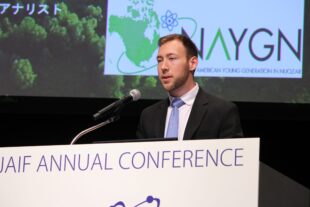
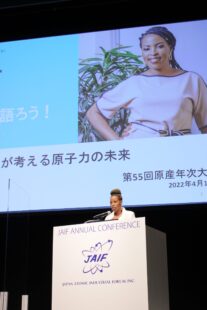
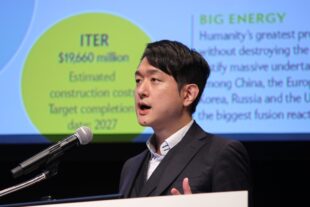


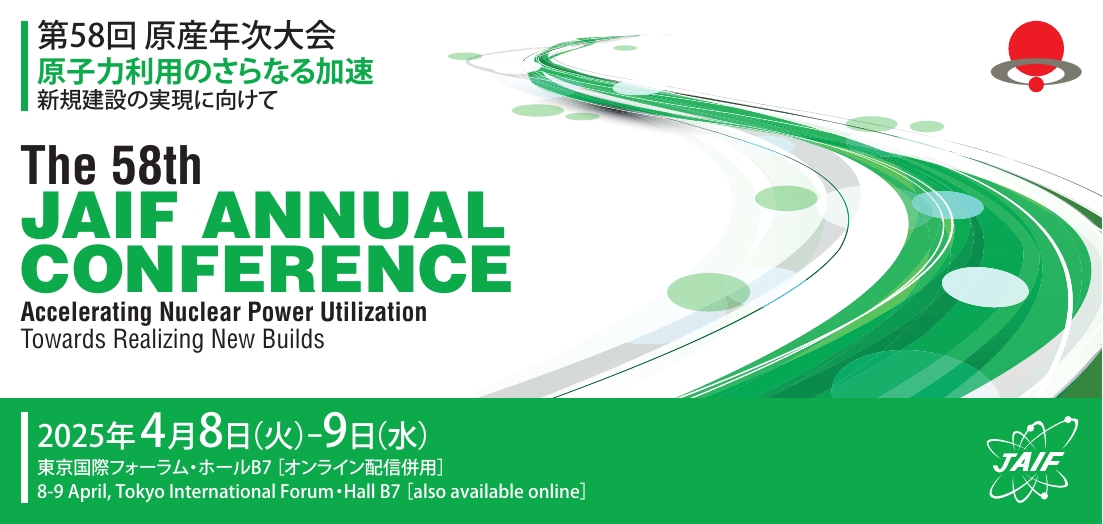
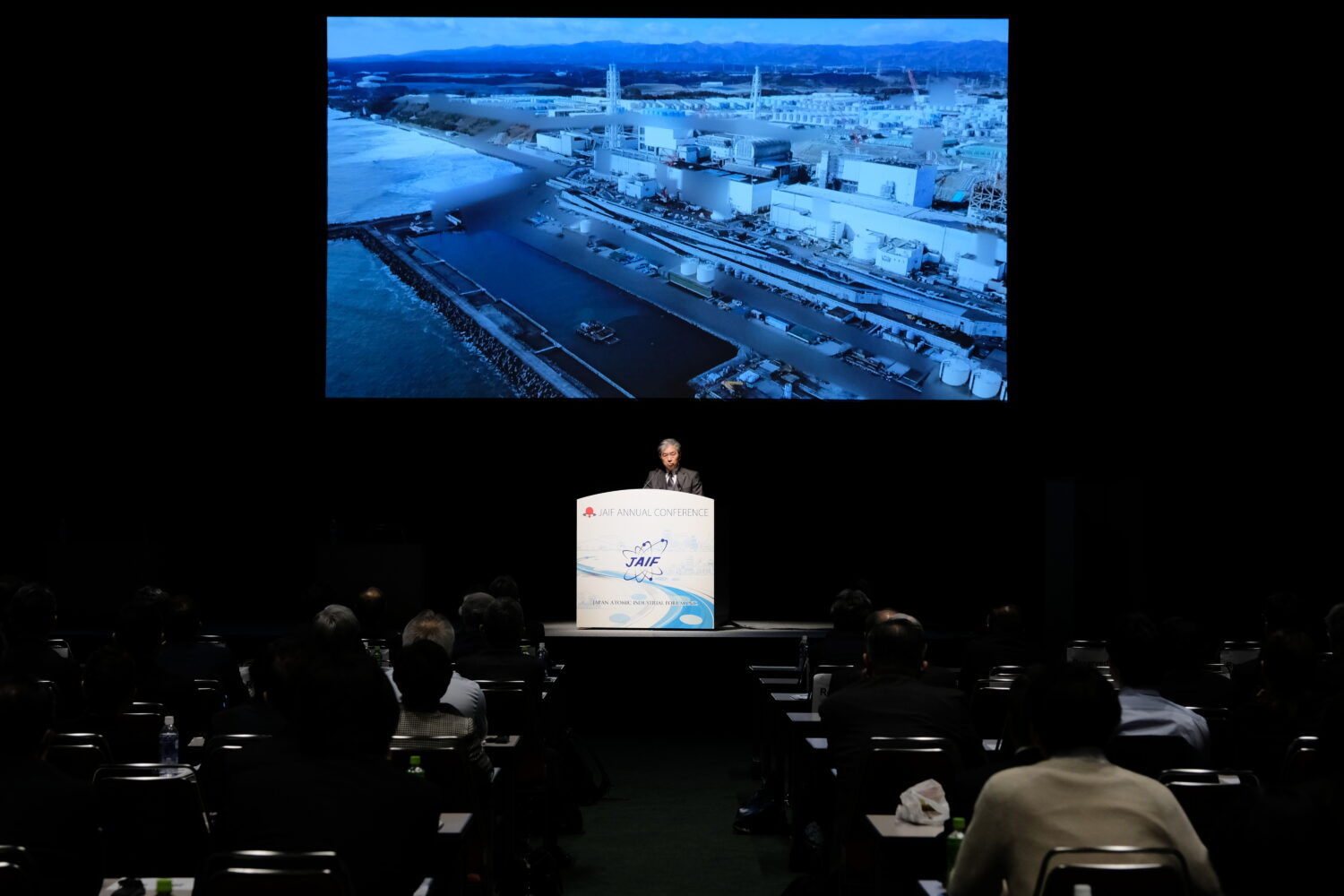


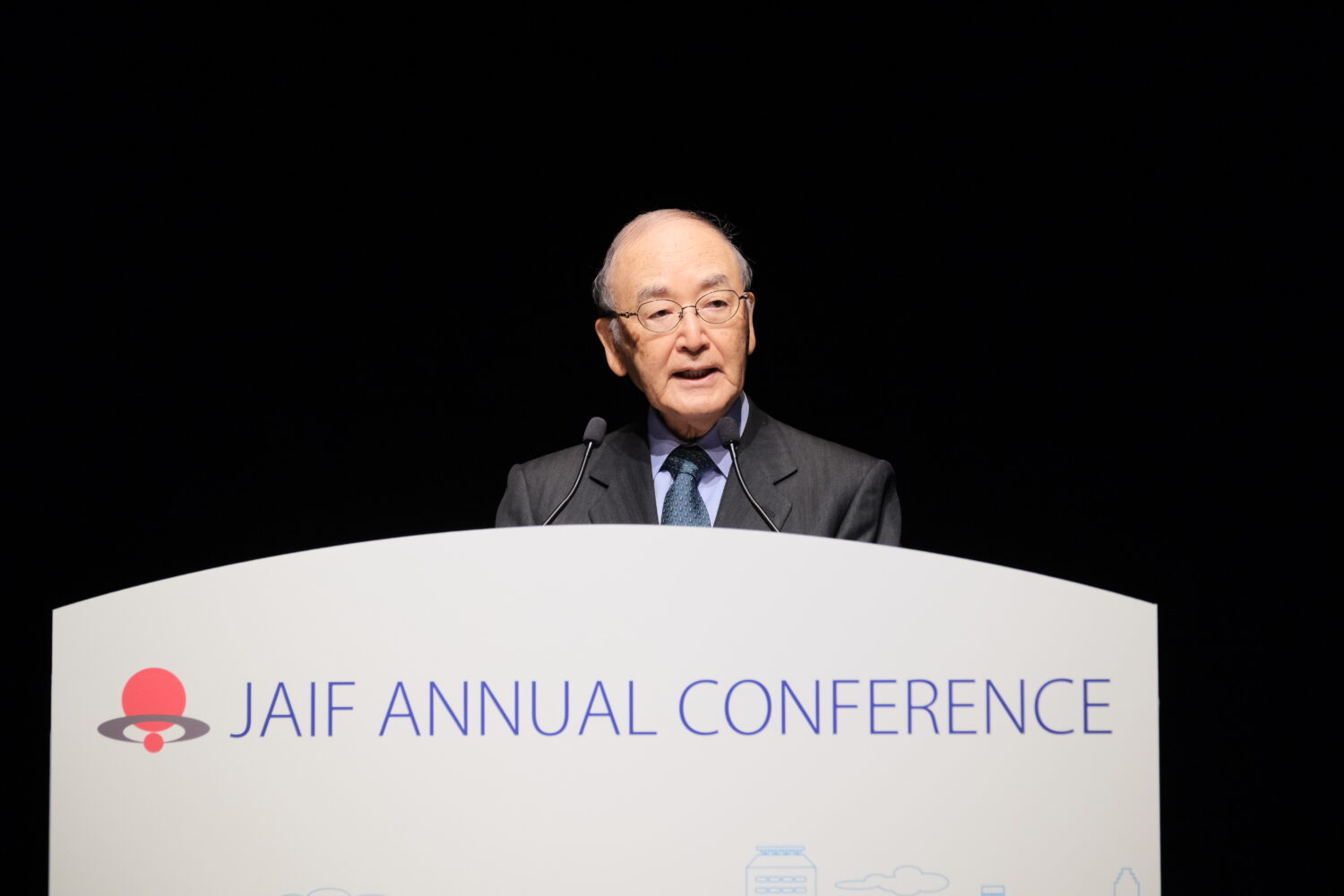

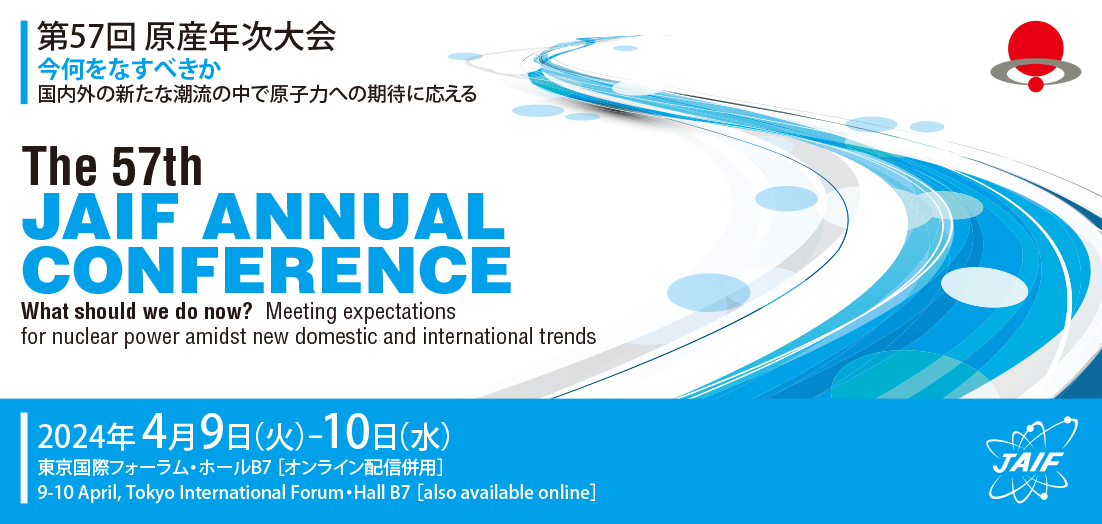
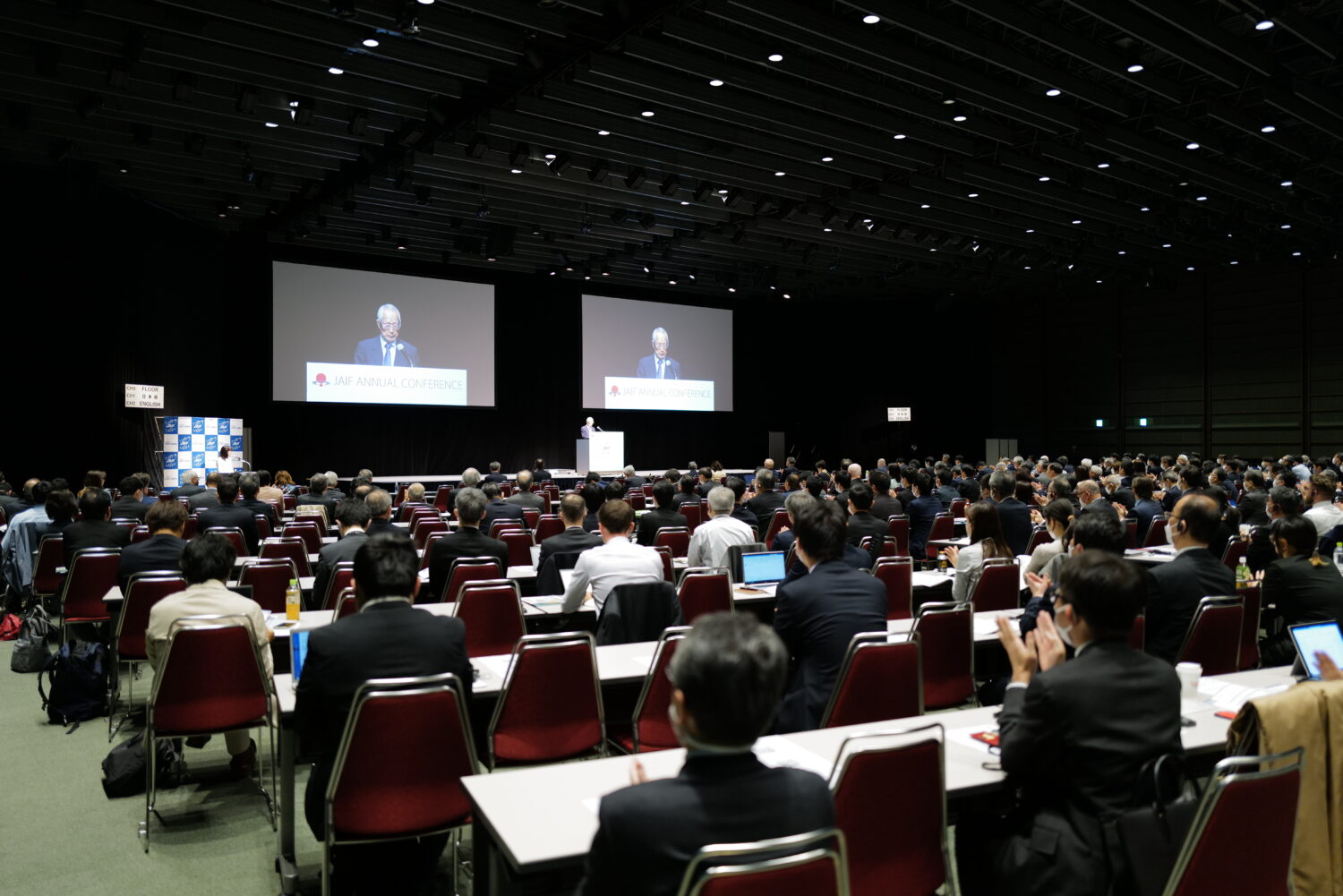
-013.jpg)







